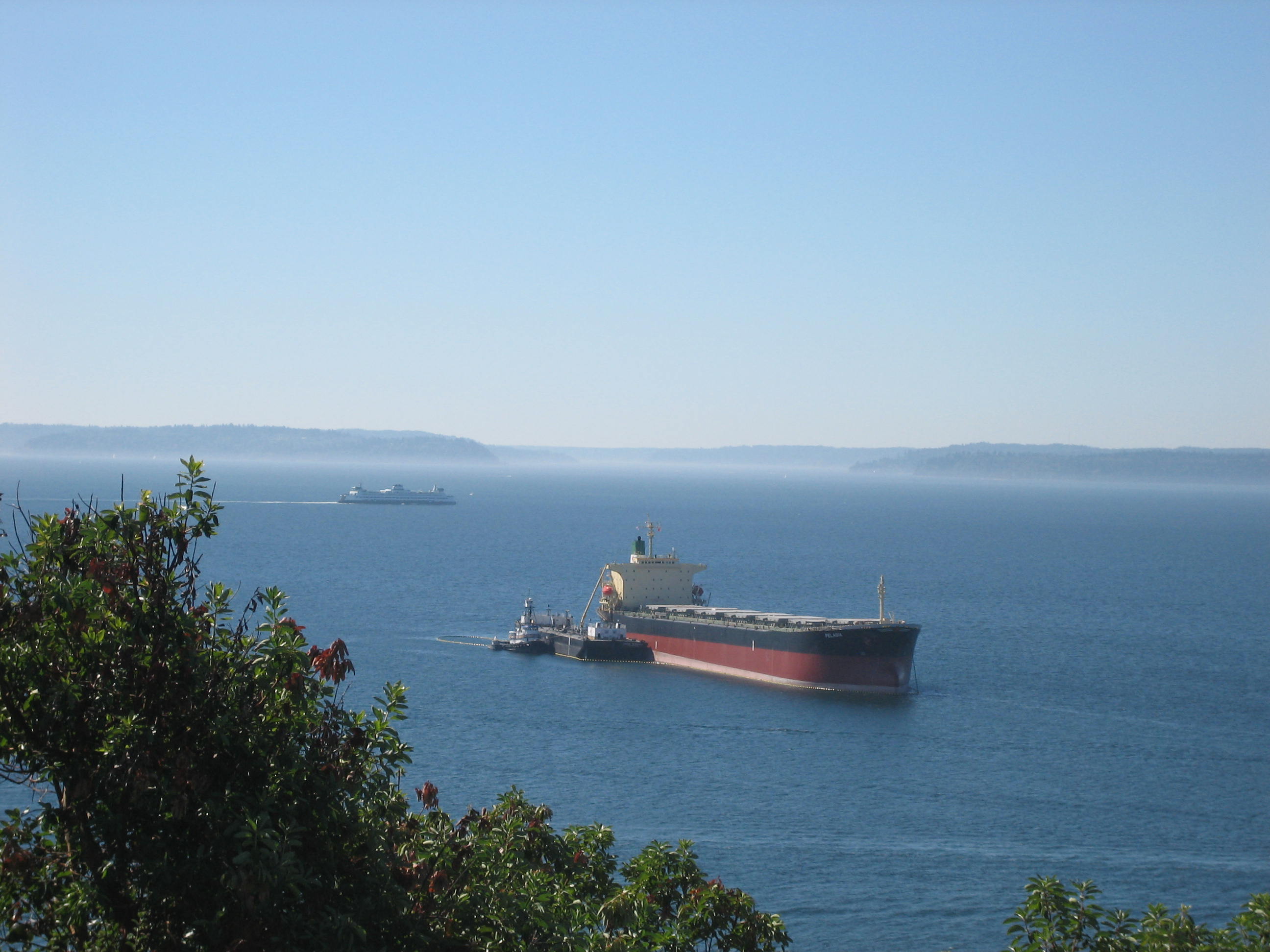Risk modeling
Vessels and state ferry in Puget Sound.
Modeling oil spill risk in Washington waters
The modeling framework is a long-term asset for Ecology to analyze oil spill risks and the potential effectiveness of oil spill prevention, preparedness, and response strategies. We consulted with Tribes and stakeholders to develop modeling assumptions and scenarios, and to periodically update the model.
Ecology used the model to complete two analyses, as directed by the Legislature:
- A quantitative assessment of whether an emergency response towing vessel (ERTV) serving Haro Strait, Boundary Pass, Rosario Strait, and connected navigable waterways will reduce oil spill risk (link).
- An analysis of tug escorts for oil tankers, articulated tug barges, and towed oil barges to be completed with the Washington State Board of Pilotage Commissioners (link).
Our model
Marine transportation systems are complex. As a result, it can be difficult to compare the relative benefits of different safety measures just by analyzing historical data. A modeling approach helps us leverage our knowledge about the past into insights about what might happen in the future.
In developing our model, we focused on creating a flexible model framework that can be responsive to a wide array of possible oil spill risk related questions. The model is structured as a series of modules, each of which deals with an element of determining oil spill risk:
- Vessel Movement Module simulates vessel movements.
- Vessel Accident Module evaluates situations for their potential for accidents.
- Momentum and Drift Module plots drift trajectories for simulated ships that lose propulsion.
- Vessel Rescue Analysis Module evaluates the potential for vessels to avoid a grounding by regaining propulsion after losing it, anchoring, or tug rescue.
- Oil Spill Risk Module generates oil related risk metrics for each simulated incident.
For future analyses, we can use some or all of these modules, or we may need to develop additional tools to meet the specific needs of the analysis.
Why it matters
More than 20 billion gallons of crude oil and refined petroleum products are transported through Washington each year by vessel, pipeline, and rail. A major spill in Washington waters could have severe consequences to the environment, economy, public health, and cultural and historical resources.
Our modeling capability allows us to consider current and future oil spills risks, and the potential effectiveness of safety measures.
Contact information
JD Ross Leahy
Maritime Risk Modeling Specialist
Spills Prevention Section
Spill Prevention, Preparedness, and Response Program
jd.leahy@ecy.wa.gov
Office Phone: 425-410-9806


